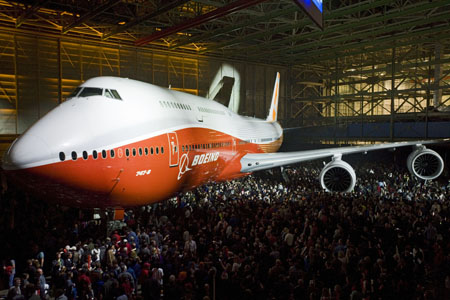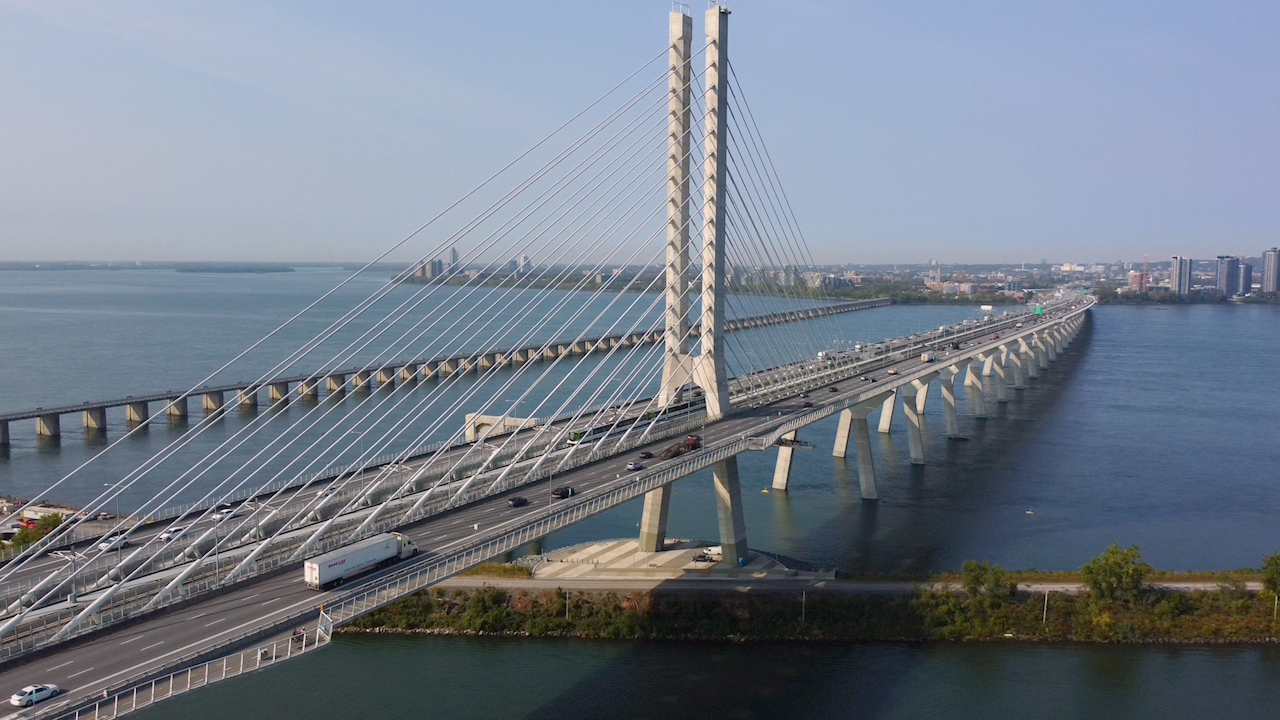
Over 40 years after the original Boeing 747 stunned the world in September 1968, Boeing unveiled its new 747-8 Intercontinental yesterday at the same factory in Everett, Washington.
Sunday's event, branded "Incredible, Again", took place in front of a crowd of almost 10,000 Boeing employees, their families, government officials, partners, suppliers and industry VIPs.
The 747-8 Intercontinental will seat 467 passengers, 51 more than the current version of the 747. It will be more fuel efficient while offering passengers more comfort, the US plane manufacturer says.
Boeing Commercial Airplanes President and Chief Executive Officer Jim Albaugh said the latest 747 incorporates technological advancements that make it an extremely productive airplane for customers.
"The new 747-8 Intercontinental features the latest in innovative technologies—applying many of the breakthroughs also found on the 787 Dreamliner," said Albaugh. "We think our customers will value the low operating costs and passengers will enjoy the comfort of the striking new interior."
"The 747-8 Intercontinental will be a great complement to our fleet, fitting nicely into the 400-seat category, improving our fleet's eco-efficiency even further," said Nico Buchholz, executive vice president, Lufthansa Group Fleet Management. "As launch customer, we are looking forward to welcoming this new aircraft to our fleet next year as it adds to our ongoing fleet modernization and environmental efforts."
"As the only airplane in the 400 to 500-seat market, the 747-8 Intercontinental will give operators an airplane perfectly suited for long, heavily traveled routes around the world," said Pat Shanahan, vice president and general manager, Airplane Programs, Boeing Commercial Airplanes. "The new 747-8 Intercontinental will set a new standard in economic and environmental performance, while providing a world-class passenger experience."
The 747-8 Intercontinental will have the lowest seat-mile cost of any large commercial jetliner, with 12 percent lower costs than its predecessor, the 747-400. The airplane provides 16 percent better fuel economy, 16 percent less carbon emissions per passenger and generates a 30 percent smaller noise footprint than the 747-400.













